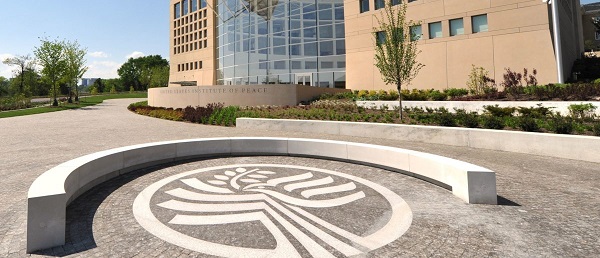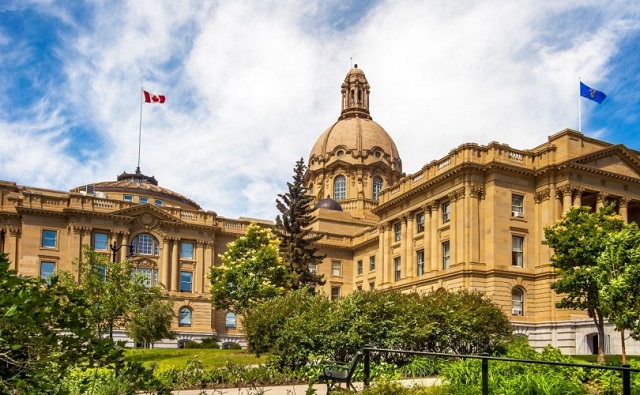Alberta
Alberta’s Covid-19 Report clearly shows the way

From the Frontier Centre for Public Policy
By Lee Harding
The Manning Commission showed that Alberta actually had a very bad process for making critical decisions. Specifically, a court case showed that the PHO checked in with cabinet decisions, but the cabinet denied that the decisions were up to them. This was not even legal
Alberta’s Public Health Emergencies Governance Review Panel has made 90 sound recommendations which that, frankly, all provinces should enact.
The panel chaired by Preston Manning examined whether the province needed better structures and legislation to handle public emergencies. Of course, Alberta needed stronger legislation to handle the COVID_19 pandemic.
The report’s strongest conclusion is that the premier, cabinet, and key ministers “have the ultimate authority and responsibility…[t]o make decisions on the emergency response measures adopted, accounting for key values, priorities and tradeoffs.”
The previous provincial Emergency Management Act left decisions with the provincial health officer (PHO). The Manning Commission showed that Alberta actually had a very bad process for making critical decisions. Specifically, a court case showed that the PHO checked in with cabinet decisions, but the cabinet denied that the decisions were up to them. This was not even legal, as the law said the PHO had final authority in emergency situations
Some critics warned that putting emergency management decisions in the hands of elected officials could leave them swayed by politics. This is a very weak argument because the same could be legitimately said for everything an elected government does.
The government responses to the pandemic led to an eight per cent contraction in the Alberta economy. This $24 billion burden had its own economic and health consequences. Unfortunately, a myopic focus on the virus by the health bureaucrats disregarded the serious toll that isolation, addiction, and suicide had on citizens.
An unfortunate dogma emerged during the COVID-19 pandemic, that social distancing, lockdowns, and rushed vaccines all deserved to be fully supported, while, at the same time, certain inexpensive generic drugs should not be used. At this time, a considerable amount of research shows that there is a defensible contrary perspective, which is a point that the Alberta report’s sharpest critics don’t seem to acknowledge.
In fact, the report wisely advises “‘[t]hat a clear and conscious decision be made by elected officials as to the scope of the scientific advice to be sought and that this decision not be left entirely to the subject-matter agency or department, given that it may have a narrower perspective than that actually required.”
To this end, “whatever scientific advisory committees, advisors and contractors are assembled to support the response be broadly based, multidisciplinary in nature, and appropriately balanced from both inside and outside government.”
The recommendation to consult widely and not to become “stuck” in political paradigms that may not work seems irrefutably sensible. Unfortunately, an openness to “alternative perspectives” has been unduly bashed.
The report emphasized that the education of school children must continue despite an emergency. Most countries avoided the long months of school closures common to Alberta and, indeed, common to other provinces. The report warns that the “compromised learning and reduced socialization…will be felt well into the future by both Alberta and Canada, across all dimensions of society, economy and country.”
Correctly the report recommends that n the future schools must remain open “except under the most exceptional circumstances,” The authors said Alberta law should enshrine not just a right that children have to education, but the province has a duty to offer it, with stiff penalties for the dereliction of such duties. The report argues that in-person learning is preferred to online learning, but improved access to technology for on-line learning was also advised.
The panel also called for helping students who fell by the wayside during school closures so that they can “make up for learning loss.” As well, the panel also called for a system-wide “intensification of punctuality, behavioural and academic performance standards.”
The panel also called for changes to the Employment Standards Code to “disallow permanent dismissals of non-compliant employees during a temporary public emergency.” Those fired for not taking the vaccine can only welcome this recommendation. The report also says that the Health Professions Act needs its “standard of practice” amended to include “recognition and protection of the rights of members to freedom of expression.” Basic measures to bolster health care will only come about when experts can freely express and defend their concerns in open debates.
The panel also recommended that the Alberta Bill of Rights be revised and strengthened. Guarantees of personal and professional freedom and “protection against discrimination on the basis of opinion, disability and medical status or history” were among the most important revisions that were suggested.
Obviously, the COVID-19 pandemic has been a painful memory for both policy makers and citizens, but the thoughtful analysis offered by the Manning panel is necessary so that Alberta is ready for the next crisis. Hopefully, all provincial governments, and indeed the federal government, will look carefully at the Alberta report and they will prepare accordingly. The next crisis, whatever it may be, could unfortunately be soon be upon us.
Lee Harding is Research Fellow for the Frontier Centre for Public Policy.
2025 Federal Election
Next federal government should recognize Alberta’s important role in the federation
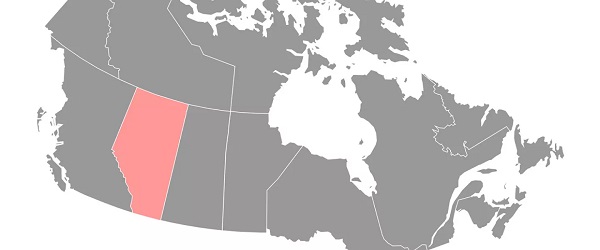
From the Fraser Institute
By Tegan Hill
With the tariff war continuing and the federal election underway, Canadians should understand what the last federal government seemingly did not—a strong Alberta makes for a stronger Canada.
And yet, current federal policies disproportionately and negatively impact the province. The list includes Bill C-69 (which imposes complex, uncertain and onerous review requirements on major energy projects), Bill C-48 (which bans large oil tankers off British Columbia’s northern coast and limits access to Asian markets), an arbitrary cap on oil and gas emissions, numerous other “net-zero” targets, and so on.
Meanwhile, Albertans contribute significantly more to federal revenues and national programs than they receive back in spending on transfers and programs including the Canada Pension Plan (CPP) because Alberta has relatively high rates of employment, higher average incomes and a younger population.
For instance, since 1976 Alberta’s employment rate (the number of employed people as a share of the population 15 years of age and over) has averaged 67.4 per cent compared to 59.7 per cent in the rest of Canada, and annual market income (including employment and investment income) has exceeded that in the other provinces by $10,918 (on average).
As a result, Alberta’s total net contribution to federal finances (total federal taxes and payments paid by Albertans minus federal money spent or transferred to Albertans) was $244.6 billion from 2007 to 2022—more than five times as much as the net contribution from British Columbians or Ontarians. That’s a massive outsized contribution given Alberta’s population, which is smaller than B.C. and much smaller than Ontario.
Albertans’ net contribution to the CPP is particularly significant. From 1981 to 2022, Alberta workers contributed 14.4 per cent (on average) of total CPP payments paid to retirees in Canada while retirees in the province received only 10.0 per cent of the payments. Albertans made a cumulative net contribution to the CPP (the difference between total CPP contributions made by Albertans and CPP benefits paid to retirees in Alberta) of $53.6 billion over the period—approximately six times greater than the net contribution of B.C., the only other net contributing province to the CPP. Indeed, only two of the nine provinces that participate in the CPP contribute more in payroll taxes to the program than their residents receive back in benefits.
So what would happen if Alberta withdrew from the CPP?
For starters, the basic CPP contribution rate of 9.9 per cent (typically deducted from our paycheques) for Canadians outside Alberta (excluding Quebec) would have to increase for the program to remain sustainable. For a new standalone plan in Alberta, the rate would likely be lower, with estimates ranging from 5.85 per cent to 8.2 per cent. In other words, based on these estimates, if Alberta withdrew from the CPP, Alberta workers could receive the same retirement benefits but at a lower cost (i.e. lower payroll tax) than other Canadians while the payroll tax would have to increase for the rest of the country while the benefits remained the same.
Finally, despite any claims to the contrary, according to Statistics Canada, Alberta’s demographic advantage, which fuels its outsized contribution to the CPP, will only widen in the years ahead. Alberta will likely maintain relatively high employment rates and continue to welcome workers from across Canada and around the world. And considering Alberta recorded the highest average inflation-adjusted economic growth in Canada since 1981, with Albertans’ inflation-adjusted market income exceeding the average of the other provinces every year since 1971, Albertans will likely continue to pay an outsized portion for the CPP. Of course, the idea for Alberta to withdraw from the CPP and create its own provincial plan isn’t new. In 2001, several notable public figures, including Stephen Harper, wrote the famous Alberta “firewall” letter suggesting the province should take control of its future after being marginalized by the federal government.
The next federal government—whoever that may be—should understand Alberta’s crucial role in the federation. For a stronger Canada, especially during uncertain times, Ottawa should support a strong Alberta including its energy industry.
Alberta
Province announces plans for nine new ‘urgent care centres’ – redirecting 200,000 hospital visits
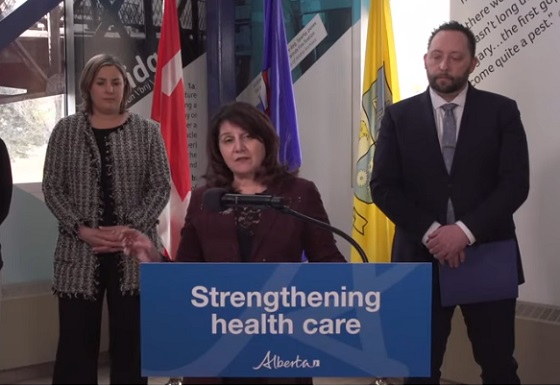
Expanding urgent care across Alberta
If passed, Budget 2025 includes $17 million in planning funds to support the development of urgent care facilities across the province.
As Alberta’s population grows, so does the demand for health care. In response, the government is making significant investments to ensure every Albertan has access to high-quality care close to home. Currently, more than 35 per cent of emergency department visits are for non-life-threatening conditions that could be treated at urgent care centres. By expanding these centres, Alberta’s government is enhancing the health care system and improving access to timely care.
If passed, Budget 2025 includes $15 million to support plans for eight new urgent care centres and an additional $2 million in planning funds for an integrated primary and urgent care facility in Airdrie. These investments will help redirect up to 200,000 lower-acuity emergency department visits annually, freeing up capacity for life-threatening cases, reducing wait times and improving access to care for Albertans.
“More people are choosing to call Alberta home, which is why we are taking action to build capacity across the health care system. Urgent care centres help bridge the gap between primary care and emergency departments, providing timely care for non-life-threatening conditions.”
“Our team at Infrastructure is fully committed to leading the important task of planning these eight new urgent care facilities across the province. Investments into facilities like these help strengthen our communities by alleviating strains on emergency departments and enhance access to care. I am looking forward to the important work ahead.”
The locations for the eight new urgent care centres were selected based on current and projected increases in demand for lower-acuity care at emergency departments. The new facilities will be in west Edmonton, south Edmonton, Westview (Stony Plain/Spruce Grove), east Calgary, Lethbridge, Medicine Hat, Cold Lake and Fort McMurray.
“Too many Albertans, especially those living in rural communities, are travelling significant distances to receive care. Advancing plans for new urgent care centres will build capacity across the health care system.”
“Additional urgent care centres across Alberta will give Albertans more options for accessing the right level of care when it’s needed. This is a necessary and substantial investment that will eventually ease some of the pressures on our emergency departments.”
The remaining $2 million will support planning for One Health Airdrie’s integrated primary and urgent care facility. The operating model, approved last fall, will see One Health Airdrie as the primary care operator, while urgent care services will be publicly funded and operated by a provider selected through a competitive process.
“Our new Airdrie facility, offering integrated primary and urgent care, will provide same-day access to approximately 30,000 primary care patients and increase urgent care capacity by around 200 per cent, benefiting the entire community and surrounding areas. We are very excited.”
Alberta’s government will continue to make smart, strategic investments in health facilities to support the delivery of publicly funded health programs and services to ensure Albertans have access to the care they need, when and where they need it.
Budget 2025 is meeting the challenge faced by Alberta with continued investments in education and health, lower taxes for families and a focus on the economy.
Quick facts
- The $2 million in planning funds for One Health Airdrie are part of a total $24-million investment to advance planning on several health capital initiatives across the province through Budget 2025.
- Alberta’s population is growing, and visits to emergency departments are projected to increase by 27 per cent by 2038.
- Last year, Alberta’s government provided $8.4 million for renovations to the existing Airdrie Community Health Centre.
Related information
-
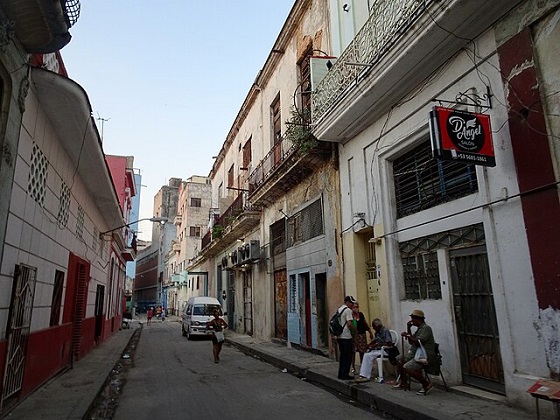
 Business1 day ago
Business1 day agoCuba has lost 24% of it’s population to emigration in the last 4 years
-

 2025 Federal Election23 hours ago
2025 Federal Election23 hours ago2025 Federal Election Interference from China! Carney Pressed to Remove Liberal MP Over CCP Bounty Remark
-

 Business2 days ago
Business2 days agoTariff-driven increase of U.S. manufacturing investment would face dearth of workers
-

 Education2 days ago
Education2 days agoOur Kids Are Struggling To Read. Phonics Is The Easy Fix
-
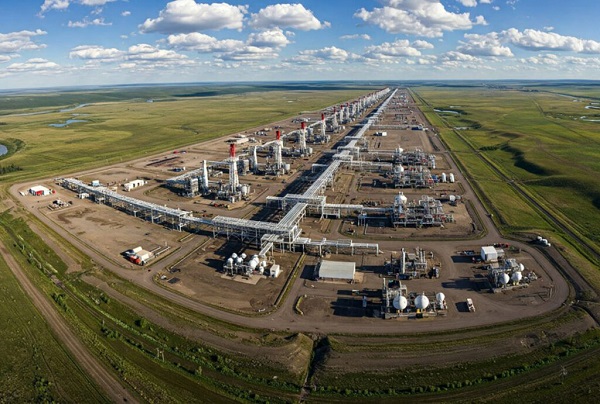
 Economy2 days ago
Economy2 days agoClearing the Path: Why Canada Needs Energy Corridors to Compete
-
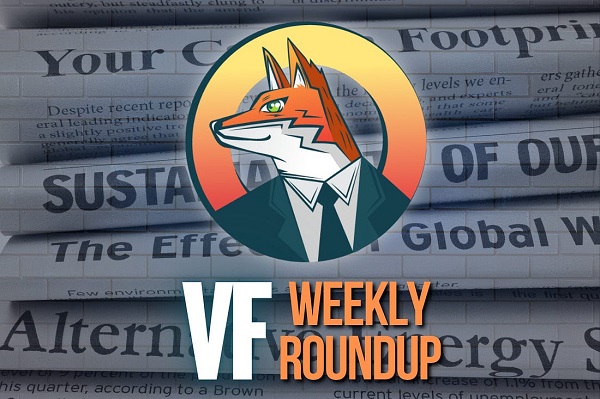
 Media24 hours ago
Media24 hours agoTop Five Huge Stories the Media Buried This Week
-
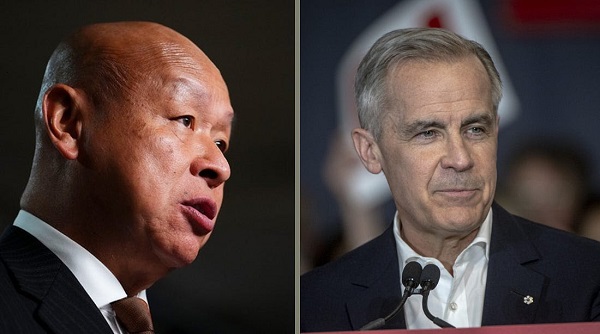
 Uncategorized22 hours ago
Uncategorized22 hours agoPoilievre on 2025 Election Interference – Carney sill hasn’t fired Liberal MP in Chinese election interference scandal
-

 Censorship Industrial Complex18 hours ago
Censorship Industrial Complex18 hours agoWelcome to Britain, Where Critical WhatsApp Messages Are a Police Matter






